Article written by Elisa - Travel Writer & Local in France
This article may contain compensated links. Please read disclaimer for more info.
France is one of the top tourist destinations in the world, a land with a rich culture and a long history which dates back to the first men. These have created a wealth of monuments throughout the country, many of which are well-known around the world.
With so many French monuments, churches, and châteaux, it’s challenging to pick out individual landmarks in France! For this article, we asked some fellow travel bloggers and friends to help us with their favorite French landmarks, those man-made landmarks in France on the top of their France Bucket Lists. If you’re researching for a French holiday and want to know which famous monuments in France to visit, and where, this list of most famous landmarks in France will help.
Top French Landmarks
This list of famous landmarks in France is far from being exhaustive but it covers the main historic periods in France with a selection of French landmarks spread all over the country.
- The Eiffel Tower
- Palace of Versailles
- Besançon Citadel
- Cité de Carcassonne
- Millau Viaduct
- Basilica-Cathedral of Saint-Denis
- Château de Chenonceau
- Abbey of Fontenay
- Mont Saint-Michel
- Hospices de Beaune
- Normandy American Cemetery
- Lascaux Cave
- Arènes de Nîmes
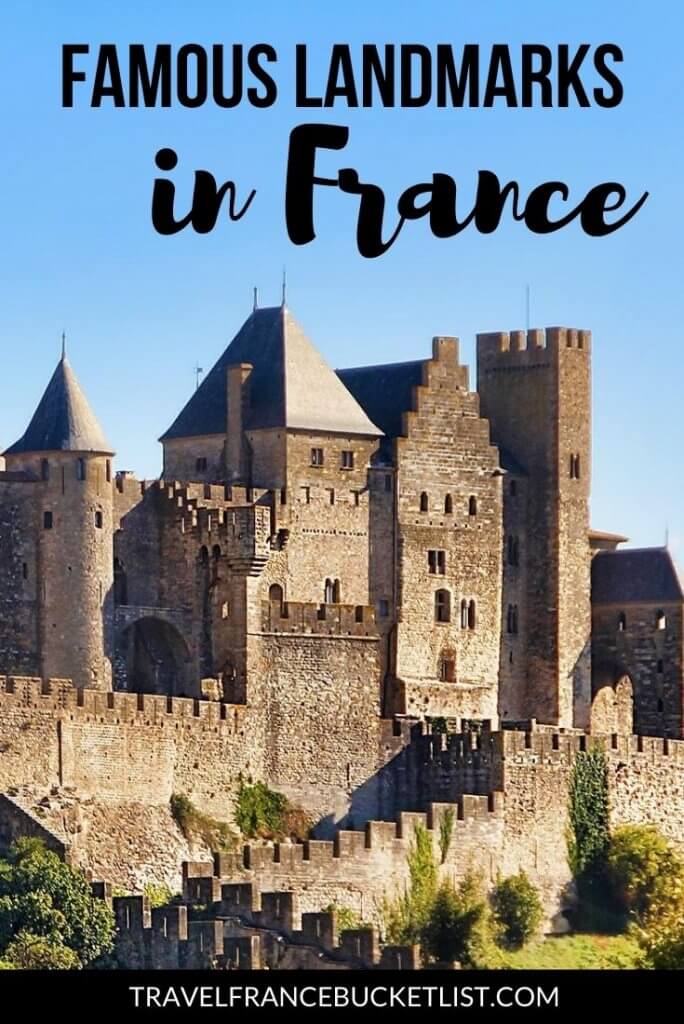
1. The Eiffel Tower

The Eiffel Tower is the most iconic monument in Paris and France. Designed by the engineer Gustave Eiffel for the World’s Fair held in France in 1889, the most famous of the French landmarks receives more than 6 million visitors every year.
With an original height of 312 meters (currently 324 meters with the antennas), the Eiffel Tower was for 40 years the world’s tallest monument. Today, it hosts an exhibition about the Tower, different restaurants and shops, and a belvedere on the summit with amazing views of Paris.
Thanks to its monumental size, it is possible to get great Eiffel Tower views from almost anywhere in Paris but if you are visiting the city for the first time you may want to climb up to the Eiffel Tower too: it is a once in a lifetime experience!
Book your Eiffel Tower tickets well in advance, especially if you want to visit it around sunset.
2. Palace of Versailles
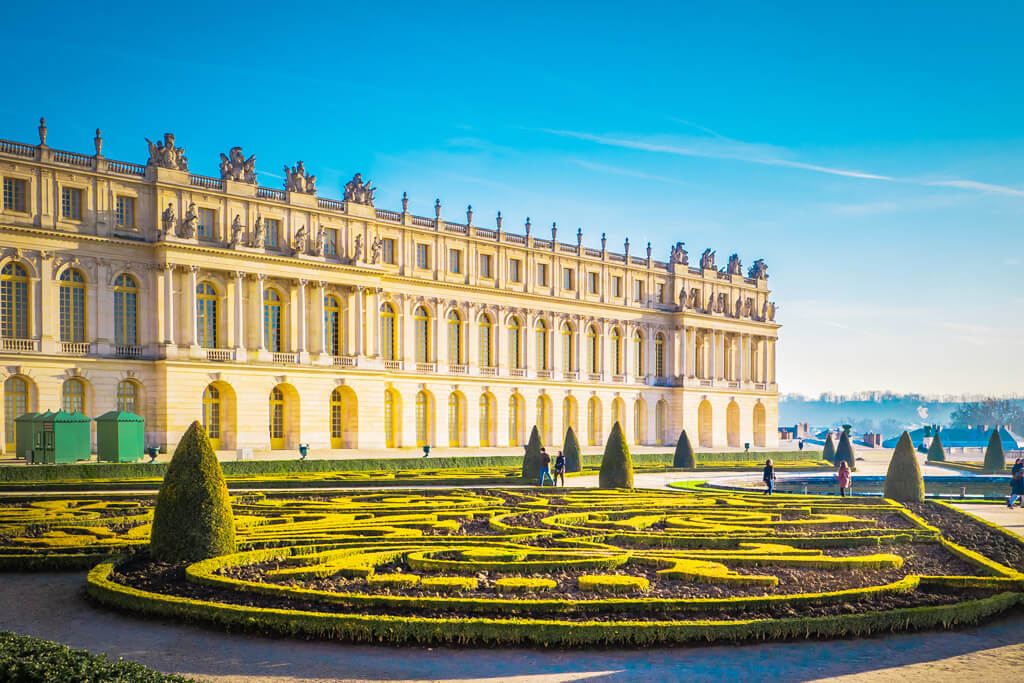
The Palace of Versailles, home to the French Kings Louis XIV, Louis XV, and Louis XVI and their courts, is one of the most beautiful castles in France to visit and a jewel of French Baroque architecture. The Palace contains 2,300 rooms of all kids spread over 63,154 m2. Among all these rooms outstands the Hall of Mirrors with its painted roof and its huge chandeliers: is a feast for the eyes!
The Palace is surrounded by beautiful French-style gardens designed by the famous landscape designer André Le Notre. These gardens are decorated with classic sculptures, fountains, and other water features.
With the Gardens, the Palaces of Trianon, and the surrounding forest, the Versailles Estate spreads over 800 hectares and it is one of the most popular day trips from Paris. To plan your trip to Versailles, check out this Versailles Quick Guide.
3. Besançon Citadel
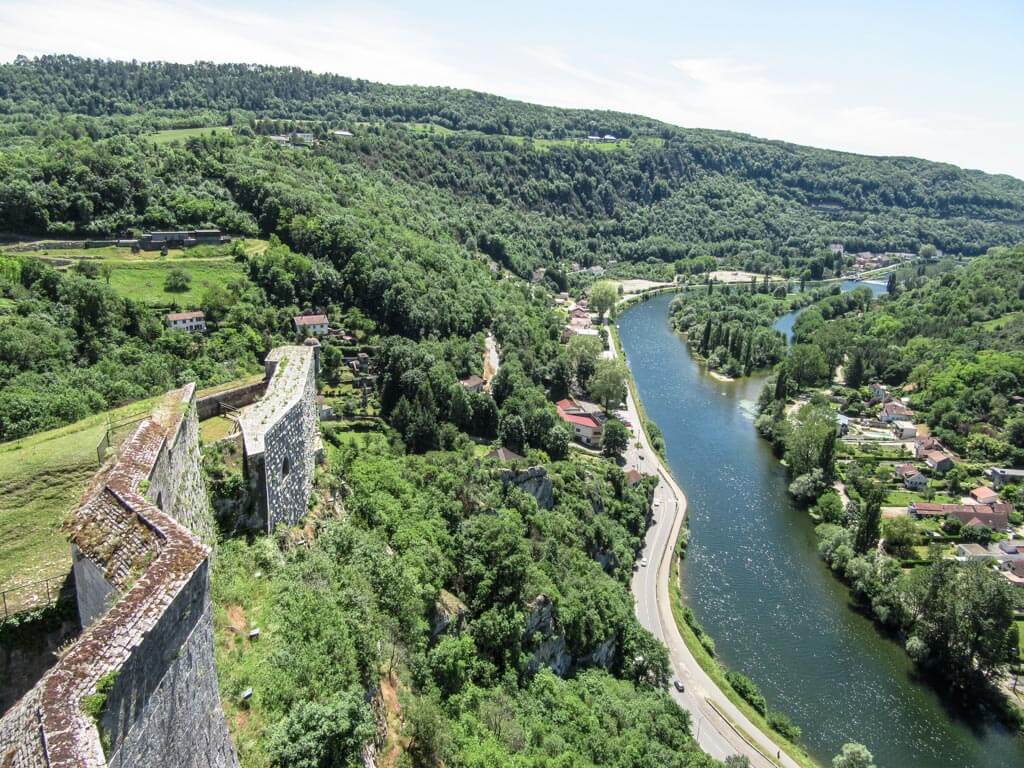
Besançon, the capital of Franche-Comté, is a charming city near the Swiss border, rich with culture, history and character. Its historic centre consists of old facades, quaint townhouses, cobbled streets and winding lanes, showcasing centuries of character and charm.
The star of the city, though, is the Citadel. A magnificent 17th-century fortress, it demonstrates a remarkable feat of architectural engineering and is often considered one of the most beautiful fortresses in France.
Besançon was appointed the capital of Franche-Comté in 1678, and Sébastien Le Prestre de Vauban, who was thought of as the greatest engineer of his time, was tasked with fortifying the city by the king. The resulting Citadel sprawled across 27 acres on Mount Saint-Etienne, one of the seven hills that protect Besançon. The fortress is very well preserved, making it one of the most fascinating landmarks in France to explore. The site is now home to several museums, including the Museum of Resistance and Deportation and a Museum of Natural History.
The architecture of the fortress itself is impressive, but the views from atop its highest point are second-to-none. The Doubs River shimmers below, bending around the old town in a horseshoe shape, while the distant Jura mountains nudge onto the horizon.
Suggested by Lauren | The Planet Edit
4. Cité de Carcassonne
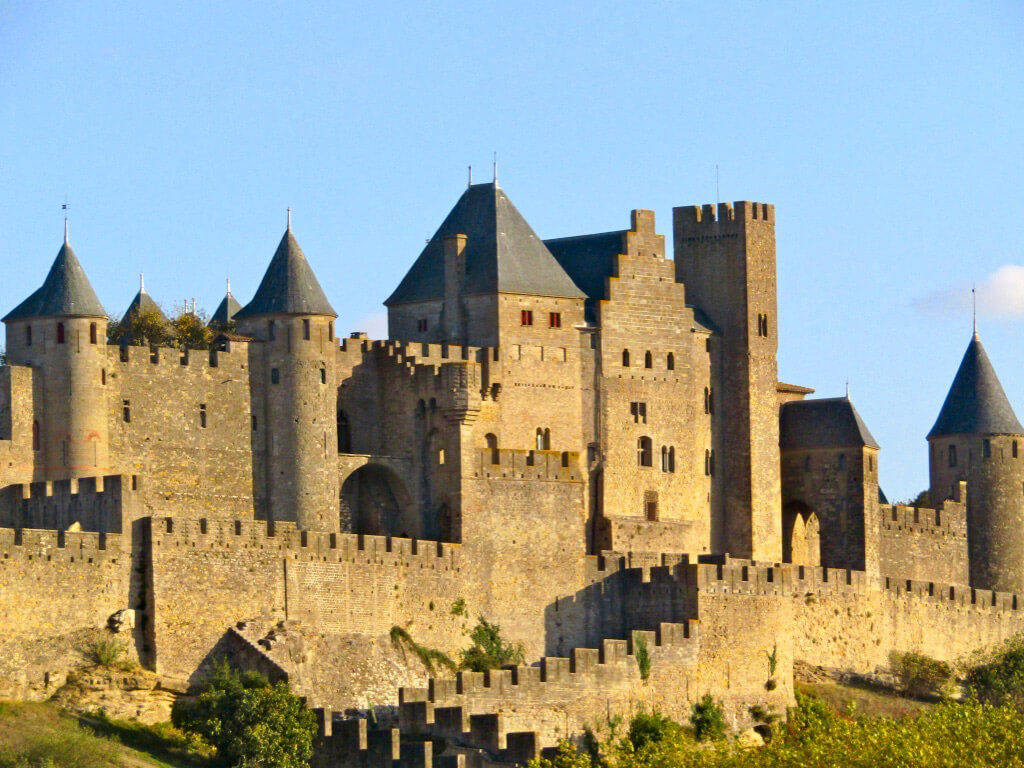
The Cité de Carcassonne, or the medieval city of Carcassonne, is a historic citadel located in the southern city of Carcassonne in the Occitanie region. This is the oldest part of the city, and with its towers and cobblestone streets, it’ll feel like you’ve stepped into a fairytale!
La Cité dates back to the 12th-century, and following successful restoration work in the 19th-century, is a UNESCO World Heritage Site today.
There are two gates for entry into La Cité, the Narbonnaise Gate (in the east) and Aude Gate (in the west). Most of La Cité is full of shops, restaurants, and hotels. But you can still appreciate the history of La Cité at the Basilica of Saints Nazaire and Celse, a beautiful Gothic-Romanesque church.
Inside La Cité you can also visit Château de Comtal and walk the ramparts for great views of La Cité and the castle towers—however, be aware that there is an admission charge to do this (€9.50 for adults). One of the best views of La Cité is from Pont Neuf (New Bridge) in the modern part of Carcassonne city, so don’t miss it!
Suggested by Maja | Away with Maja
5. Millau Viaduct
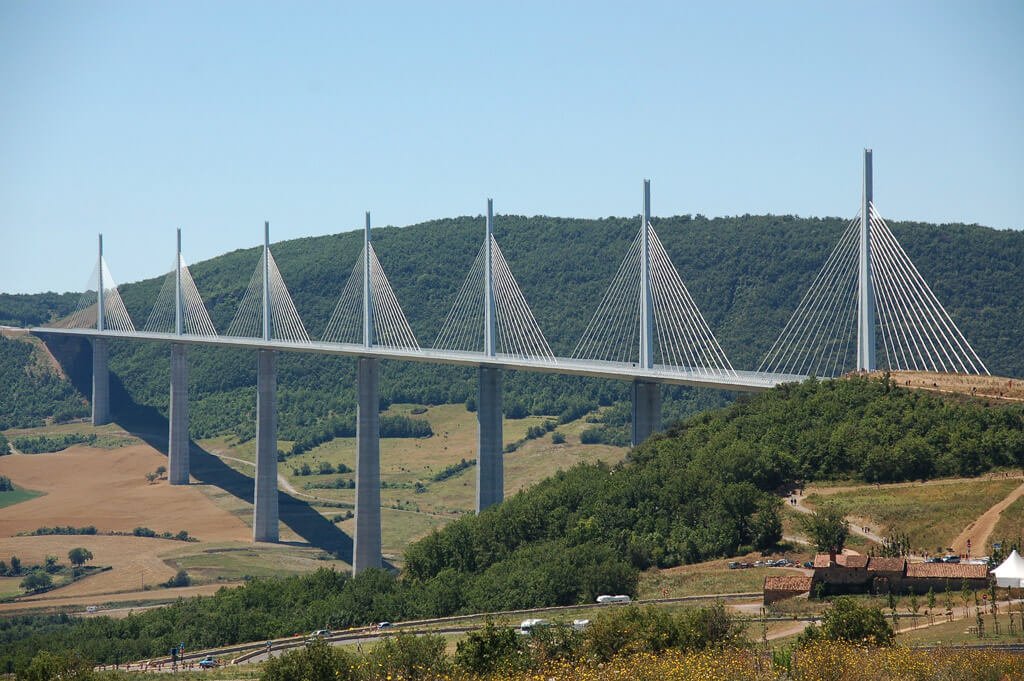
One of the most famous places in France is the Millau Viaduct. This stunning structure designed by the French structural engineer Michel Virlogeux and English architect Norman Foster is in La Méridienne on the A75 motorway, which links Clermont-Ferrand with Béziers and Narbonne,
Standing at an incredible 886 ft, it ranks number 15 in the list of highest bridges in the world and is a must for any French road trip. The Millau Viaduct was opened in 2004 and cost around €394 million to build.
There is a viewing area and a tourist information center at the motorway service station nearby- perfect for learning more about the viaduct.
The viaduct crosses the Tarn valley and it really is a picturesque spot, especially when the clouds and fog roll in, making the large metal suspensions look like sails. Whilst you’re in the area, it is definitely worth also visiting the gorges of Tarn – one of the most historic places in France, with old ruins, fortresses, and churches, as well as more active activities such as canoeing, kayaking, and climbing- there’s something for everyone.
Suggested by Kat | The Wandering Bird
6. Basilica-Cathedral of Saint-Denis
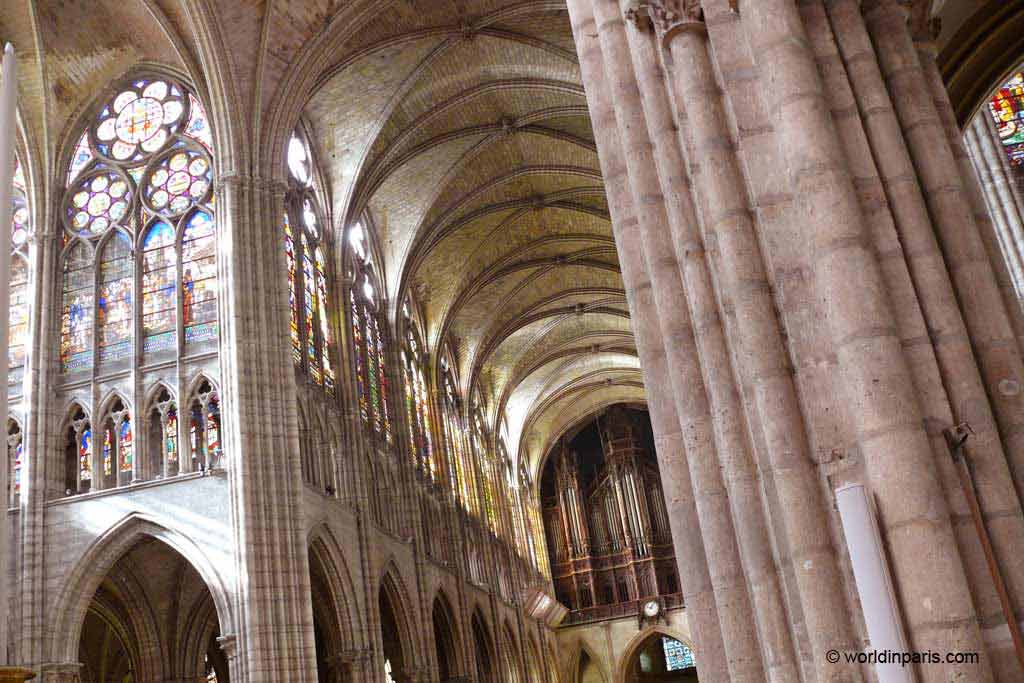
All the Grandes Cathédrales would deserve a spot on this list of man-made landmarks in France but we have chosen the Basilica of Saint-Denis because it represents the birth of Gothic architecture in France.
Saint-Denis is a basilica-cathedral dedicated to Saint-Denis, the historical saint patron of Paris. Located in the city of Saint-Denis, a few kilometers north of Paris, the cathedral is supposed to host the remains of the saint.
In the 12th century, Abbot Suger decided to rebuild the choir of the old abbey using new and innovative techniques like the pointed arch, the pointed ribbed vault, or the use of stained glass windows to get more light inside. These architectural techniques are considered today the basis of Gothic Architecture.
Saint-Denis is also the burial place of the Kings of France. More than 70 original royal tombs give us a complete idea of the evolution of the funerary statuary in France from the 12th century to the 19th century in what is today the biggest museum of funerary art in the world. We highly recommend visiting Sain-Denis with a guided tour so you can learn more about the French Kings and the evolution of funerary art over the centuries.
7. Château de Chenonceau
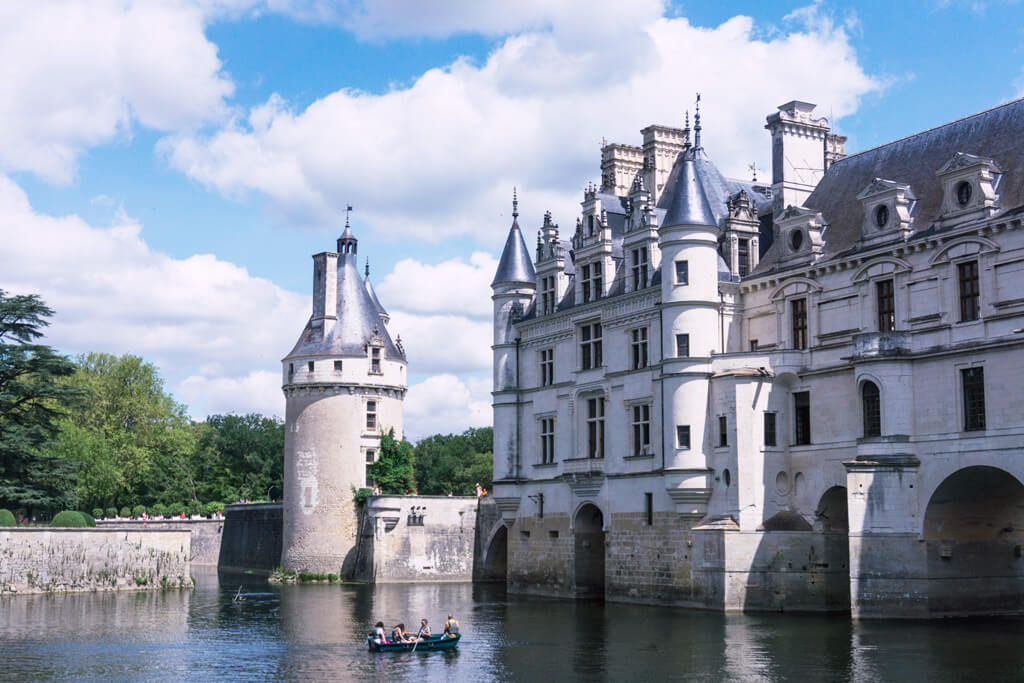
The Loire castle of Chenonceau is one of the best Loire Castles to visit in France. If you go castle hunting in the Loire Valley, make sure to put this impressive French landmark on your list.
Chenonceau was built in the 16th century but had its best times during and after the reign of the French king Henry II. He bought the beautiful palace as a present for his mistress Diane, while giving his wife Catherine the less impressive Chaumont. Diane created the bridge that makes Chenonceau such an impressive sight. It connects the castle on one river bank with the other.
As soon as the king died, Catherine made sure to take the castle from Diane, trading it for her Chaumont castle. Catherine adjusted Diane’s palaces drastically. One of her best decisions was building a two-story gallery on Diane’s bridge.
But Chenonceau is more than this beautiful castle. The castle grounds have beautifully landscaped gardens, a maze, boat rental and a vegetable garden. Make sure to plan in enough time to visit them as well.
Suggested by Maartje | The Orange Backpack
8. Abbey of Fontenay
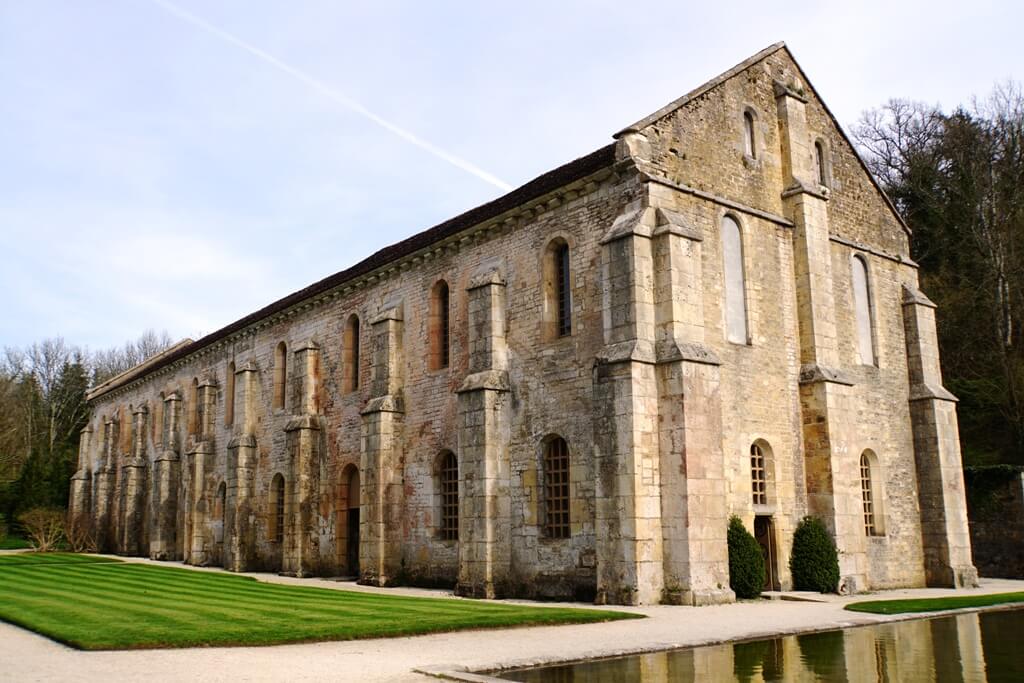
Founded in 1118, Fontenay Abbey in the region of Burgundy is an iconic destination for those interested in history, religion, and culture in that it is the oldest preserved Cistercian abbey in the world. This stunning UNESCO World Heritage Site lies just over an hour from Dijon and three hours from Lyon or Paris and is well worth a visit if you’re planning a trip to Burgundy or taking a tour of some of the famous landmarks in France.
The well-kept abbey is nestled in an area of outstanding beauty, with pristinely manicured gardens and a picturesque surrounding valley. The convent buildings have been preserved in such a way that it feels as though you’re stepping back in time when you enter, allowing you to clearly envisage what monastic life here would have been like.
Fontenay Abbey is open year-round and each season highlights a new side of the site’s natural beauty.
Suggested by Chrysoula | Historic European Castles
9. Mont Saint-Michel
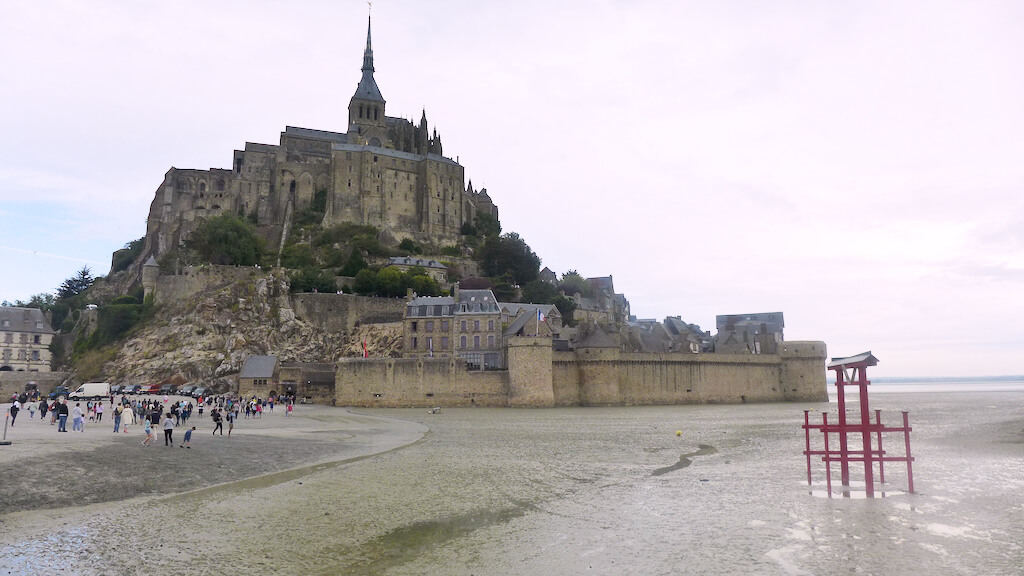
The island of Mont St Michel, located one kilometer off the Normandy coast in northwestern France is one of France and also Europe’s most iconic landmarks. Situated in the mouth of the Coesnon River 60 km east of St. Malo this tidal location enables visitors to walk to the island adding to its romance.
A UNESCO World Heritage Site since 1979 Mont St Michel has been a popular pilgrimage site since 708 AD when the Archangel Michael supposedly appeared to the Bishop of Avranches. The famous Gothic Benedictine Abbey atop the island a result of his instruction to him to build a church.
A popular pilgrimage site for over a thousand years, 3 million visitors now explore the narrow streets, ramparts, charming stores and restaurants surrounding the Abbey each year.
Considering this large number of visitors those wishing to explore the island for themselves are well-advised to arrive as early as possible. As well as avoiding queues and crowded streets you should be treated to a dramatic sunrise. To help early risers the shuttle bus from the nearby car park starts at 07.30 am each day.
Suggested by Paul | The Two that Do
10. Hospices de Beaune
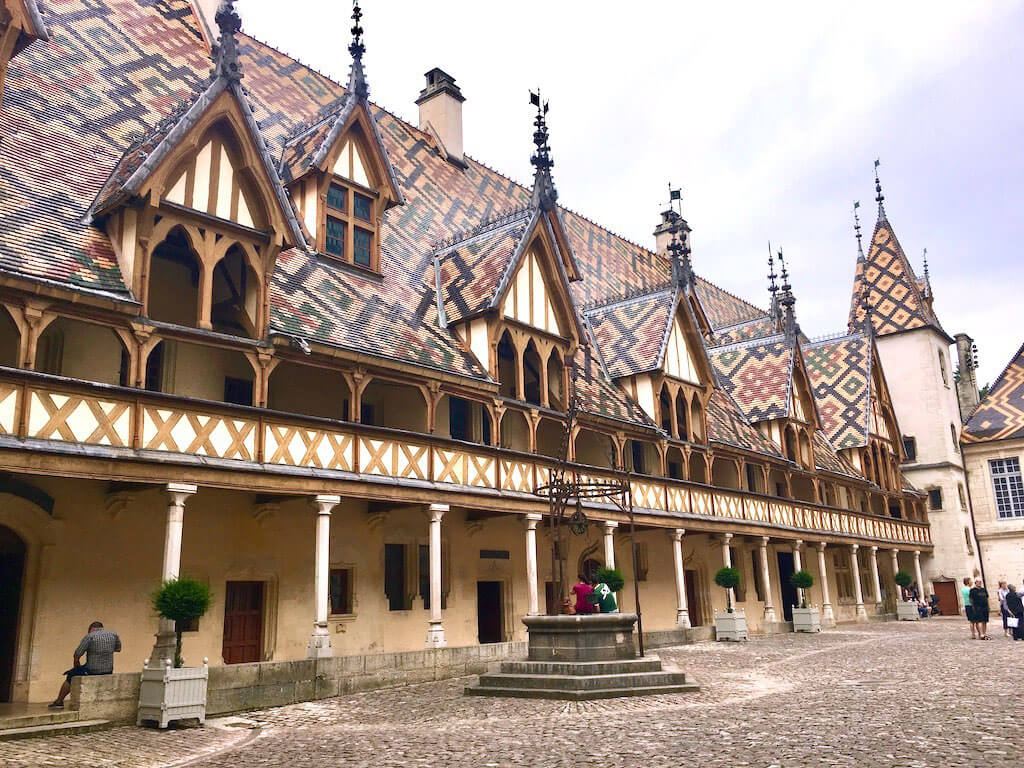
Hotel Dieu, also known as Hospices de Beaune, is a French landmark with a very interesting history. The building, now operating as a museum, was founded in 1443 by the chancellor to the Dukes of Burgundy, as a hospital for the poor folk in the area.
With the most impressive Gothic architecture and an intricate colored tile roof indicative of the style of the era, the Hospices de Beaune opens a window into what life for the poor would have been like in Beaune in the Middle Ages through a full reconstruction of the main hospital ward, chapel, and apothecary.
Hotel Dieu functioned as a hospital until 1971 and proceeds from the yearly world-renowned auction of wine from its vineyards continues to raise funds for the new hospital and the maintenance of the museum. The building and courtyard are free to enter, and a self-led audio tour is available, describing Hotel Dieu’s interesting history and why Beaune was chosen as the setting for this incredible French landmark. It is better to visit in the morning if you want to take photographs without the crowds.
Hotel Dieu is just one of the fascinating and delightful things to do in Beaune on a trip and is well worth a visit.
Suggested by Angela | Where Angie Wanders
11. Normandy American Cemetery
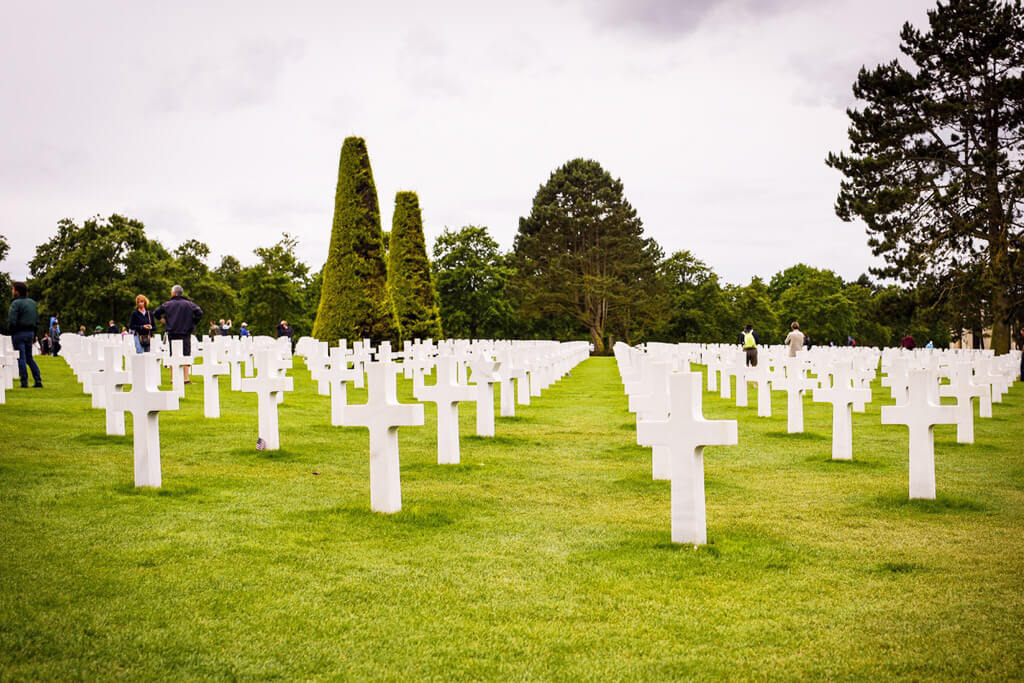
One of the most iconic symbols of America’s role in World War II, the Normandy American Cemetery is located in Colleville-sur-Mer and is a powerful experience for anyone interested in learning about the history of D-Day.
Here you will find the graves of nearly ten thousand American military personnel who lost their lives on D-Day and its immediate aftermath. There is also a memorial to over 1500 names of those who went missing and were never found after.
While you can visit the cemetery year-round, it’s especially significant and moving to visit at the beginning of June during the days when Normandy is alive with visitors celebrating and commemorating D-Day. The anniversary of D-Day is celebrated annually on June 6th, but the days leading up to it are also good days to visit. Besides the typical tourists, you have the chance to see some of the remaining D-Day Veterans as well as family members of those buried here.
Suggested by Stephanie | History Fangirl
12. Lascaux Cave
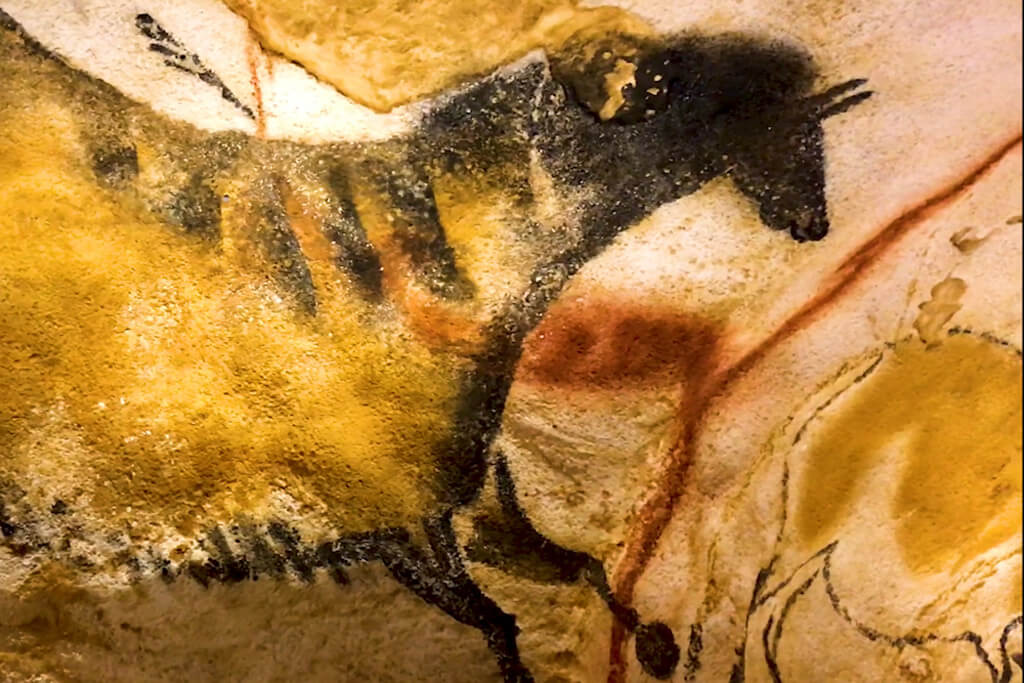
If you are going to southwest France, visiting Lascaux Cave is a must-do! Located in the picturesque village of Montignac in Dordogne, Lascaux is one of the most important prehistoric sites in the world! The caves feature over 600 parietal paintings!
Lascaux was discovered in 1940 by a group of local young boys and open to the public in 1963. Unfortunately, human breath started to make the paintings deteriorate which is why the original site was permanently closed in the 80s. The caves that can be visited now are replicas.
This UNESCO World Heritage site is the perfect place to visit if you love history and art. You will be mind blown by the quality of the paintings. The precision and techniques they were using back then are absolutely fascinating.
Lascaux is one of the top things to do in Dordogne and you can easily get to Lascaux by car. Once you’ve parked, head to the desk to grab your ticket. Prices start at 20 euros and include a guided tour of the cave. The guides are passionate and they love showing visitors how amazing Lascaux is.
Lascaux gets very busy in July and August. Try to get there when they open the doors (at 8 am) otherwise you could find yourself having to wait quite a bit
Suggested by Pauline | BeeLoved City
13. Arènes de Nîmes
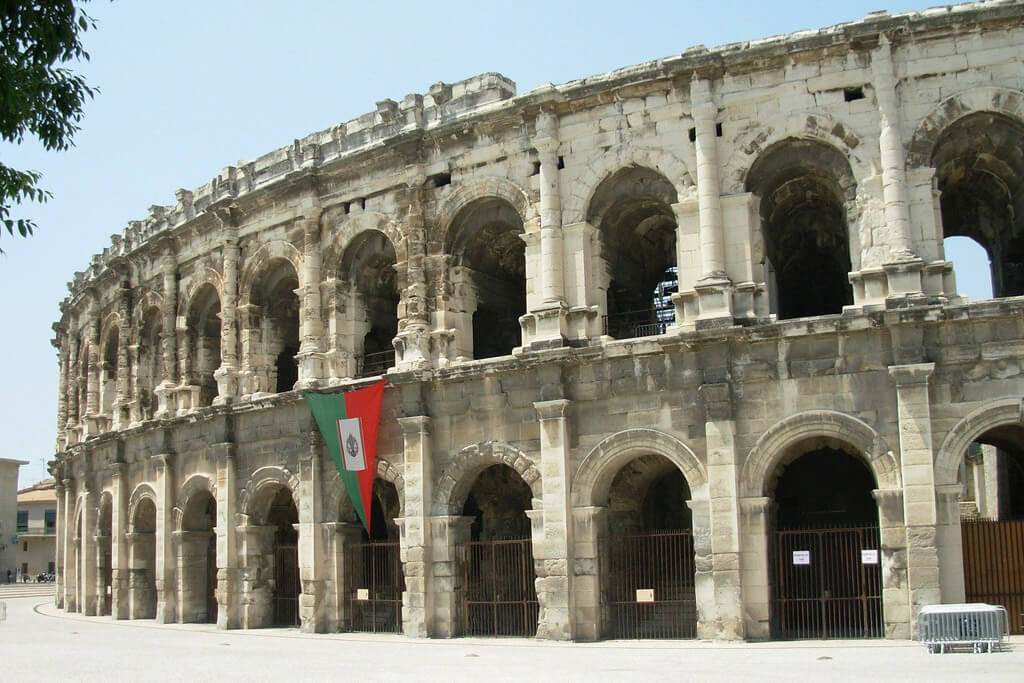
Les Arènes de Nîmes is a Roman amphitheater built around 70 CE in the city of Nîmes. It is one of the must-Roman sights to visit in the city, together with the Tour Magne and the Maison Carrée.
Les Arènes de Nîmes is definitely not the biggest Roman amphitheater in the world but it is the best preserved. Built to host different kinds of shows to entertain the locals, it measures 133 meters long and 101 meters wide and it has two floors and an attic separated by a cornice. Still today, Les Arènes de Nîmes organizes some shows for tourists and locals and it is also possible to visit every day except when there’s a show.
Nimes, was founded in the 1st century with the name of Nemausus by the veterans of the Gallic Legion, and it is often referred to as the French Rome. The city is a beautiful destination in itself but you can also visit Nîmes on a day trip from Avignon.
So there you have it, our selection of popular landmarks in France. Which French landmarks are in your France Bucket List?

